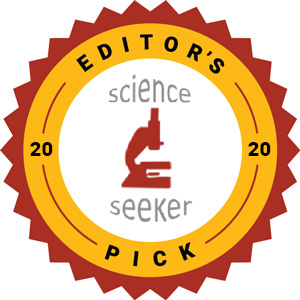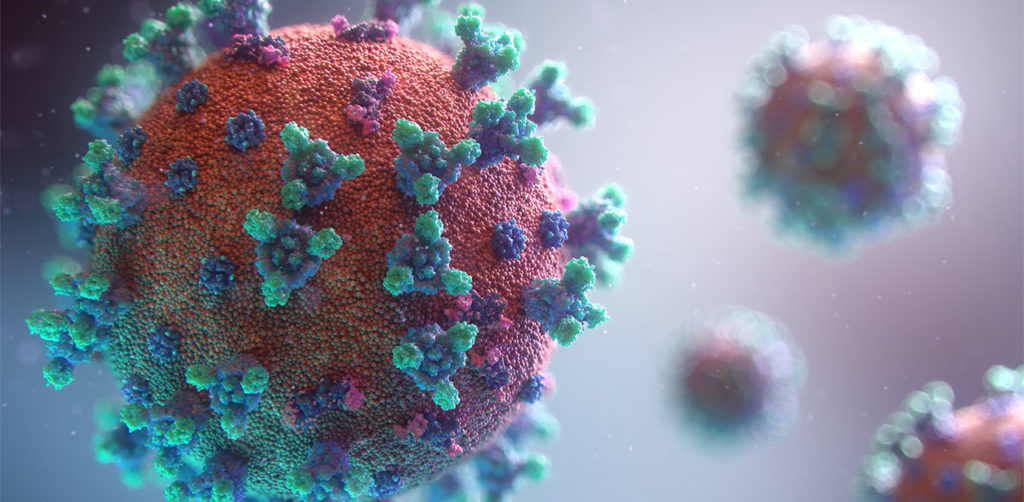
14-year-old Anika Chebrolu spent the early months of the COVID-19 pandemic identifying a potential anti-SARS-CoV-2 drug candidate. Originally, she was screening potential anti-influenza treatments, but as she watched COVID-19 case numbers rising around the world, she pivoted to focus instead on the SARS-CoV-2 virus. Several months later, Anika not only discovered a strong candidate for further testing, but she earned the title of 2020 Top Young Scientist in a competition sponsored by 3M.

In-Silico Methods for Influenza Drug Discovery
Anika’s video entry to the 3M Young Scientist Challenge describes her methods for finding an anti-influenza drug, but according to a different presentation published in alongside an article in The Lily, her methods were similar for studying SARS-CoV-2. Anika studied the molecular docking between the drug candidate and its target protein using in-silico methods – computer-based research that relies on projections and calculations.
“I developed a potential antiviral for covid-19 infection. I found the molecule from a database of millions of compounds that can bind to the spike protein of the SARS-CoV-2 virus and change its shape. And by changing the shape of the spike protein by attaching the molecule to it, it can stop the virus from infecting human cells, and basically stop the infectivity of the virus in human cells.”
–Anika Chebrolu, as told to The Lily
In her entry video, Anika describes her methods for analyzing over 3 million molecules to find the best drug candidate to target the influenza hemagglutinin protein. Hemagglutinin facilitates entry of the virus into host cells. Anika used FTMap to identify binding hot spots on each protein.
Next, Anika used Lipinski’s Rule of 5 (also known as the rule of five, or RO5) to screen over 3 million molecules from the ZINC 15 database of commercially available compounds. This set of criteria is used to identify molecules with physiochemical properties that are likely to produce a response in the body. For influenza, she narrowed it down to about 250,000 molecules.
Anika used the CLC Drug Discovery Workbench software to test the molecular docking of each of the compounds with the target protein and identify the top 100 compounds with the highest affinity for the binding site. These compounds were then tested for ADMET properties: Adsorption, Distribution, Metabolism, Excretion and Toxicity. These properties provide information about the potential safety of the drug compound for human consumption, as well as projections for how it will behave in the body. This is typically the step when the most candidates are eliminated, especially for demonstrating high toxicity. In Anika’s influenza study, only six molecules met the criteria.
The final six molecules were then screened again for binding affinity using PyRx software, and Anika selected her leading candidate.
6-(4-Methylpiperidin-1-yl)sulfonyl-1-azatricyclo[6.3.1.04,12]dodeca-4,6,8(12)-trien-2-one
Anika’s lead molecule for inhibiting the influenza hemagglutinin protein
Anika’s video presenting her poster “In-Silico Molecular Docking Study of Hemagglutinin Protein to Develop a Novel Anti-Influenza Drug” is available here.
A short overview of her project analyzing molecular docking to the SARS-CoV-2 Spike protein is available here.
Looking Ahead
In-silico methods are important for identifying compounds that are likely to bind to target proteins. Through her series of experiments, Anika was able to narrow over three million molecules down to one. She not only showed that this molecule has a high affinity for the binding site on hemagglutinin, but she also demonstrated it is likely to produce a positive response in the human body.
Computational methods are crucial for identifying top candidates, but the work has only begun. Target engagement and ADMET properties can be measured in live-cell assays or by using biochemical methods. Anika says she plans to connect with virologists and drug development researchers to discuss how her research into these molecules can continue.
Anika’s research was supported by her mentor in the 3M Young Scientist Challenge, Dr. Mahfuza Ali, a scientist in the 3M Materials Resource Division. For winning the competition, Anika received $25,000, which she says she’s planning to use to support a nonprofit she created to support other student research projects.
As of November 2, 2020, only one drug – remdesivir – has received FDA approval for use in adults and pediatric patients for the treatment of COVID-19. Anika’s research supports a global effort to identify and test potential treatments as we continue to address the challenges of the pandemic.
Interested in small-molecule drug discovery? Explore our resources, including tools for studying target engagement in live cells.
Promega is prepared to support scientists in their work towards understanding SARS-CoV-2 and developing drugs to treat the infection. Click here for more information.
Latest posts by Jordan Villanueva (see all)
- Tackling Undrugged Proteins with the Promega Academic Access Program - March 4, 2025
- Academic Access to Cutting-Edge Tools Fuels Macular Degeneration Discovery - December 3, 2024
- Novel Promega Enzyme Tackles Biggest Challenge in DNA Forensics - November 7, 2024
